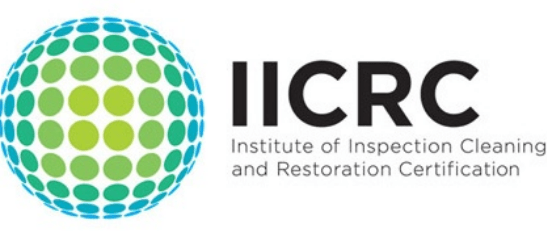In the wake of a disaster, the path to recovery can often look like a mountain we must climb. As we navigate the aftermath, it’s crucial that we don’t lose sight of our responsibility to the environment. After all, we’re not just cleaning up our homes and communities, we’re also stewards of our planet.
So, how can we ensure our restoration efforts are as green as they are effective? Turns out, the answer is not as complicated as it might seem. Stick around, and we’ll explore some innovative, eco-friendly solutions that promise to turn this daunting task into a manageable one, without causing further harm to our environment.
Understanding Eco-Friendly Restoration
 To fully appreciate eco-friendly restoration, we must first understand its core principles and how it promotes sustainability. It’s more than just a buzzword; it’s a way of living that minimizes our impact on the environment while ensuring the longevity of our resources. It’s about striking a balance: restoring our homes and offices after a disaster without causing further harm to our planet.
To fully appreciate eco-friendly restoration, we must first understand its core principles and how it promotes sustainability. It’s more than just a buzzword; it’s a way of living that minimizes our impact on the environment while ensuring the longevity of our resources. It’s about striking a balance: restoring our homes and offices after a disaster without causing further harm to our planet.
We’ve all heard about reduce, reuse, recycle, but there’s more to it. Eco-friendly restoration also involves using natural, non-toxic products and biodegradable materials. We’re talking about cleaning agents that aren’t harmful to us or the environment. We’re talking about materials that can be broken down and returned to the earth without causing pollution.
But it doesn’t stop there. Eco-friendly restoration also means using energy-efficient methods and technologies during the restoration process. We strive to use less energy, water, and other resources to reduce our carbon footprint. We’re conscious about the waste we generate and make a concerted effort to recycle or compost where possible.
We also look at the longer-term effects of our actions. We’re not just restoring for today; we’re restoring for the future. It’s an investment in sustainability, a commitment to reducing our environmental impact while still enjoying the comforts of our restored spaces.
Natural Deodorizing Techniques
Building on the principles of eco-friendly restoration, let’s explore the wonders of natural deodorizing techniques. After a disaster, offensive odors can linger, making any space uncomfortable. We don’t have to rely on synthetic, chemically laden products for odor removal. Nature offers us a plethora of safe, effective, and eco-friendly alternatives.
Baking soda is a classic natural deodorizer that we can’t ignore. It’s fantastic at absorbing unpleasant smells, particularly in enclosed spaces like fridges or closets. Just place an open box or dish of baking soda in the affected area, and it’ll work its magic.
Another wonder-worker is vinegar. It’s a potent natural deodorizer, particularly effective against smoke and food odors. We can create a simple air freshener by mixing white vinegar with water in a spray bottle.
We can also harness the power of essential oils. These concentrated plant extracts not only smell heavenly, but they also have antimicrobial properties that can help eliminate odor-causing bacteria. Try diffusing oils like lemongrass, lavender, or tea tree in your space.
Activated charcoal is another excellent option. It’s highly porous and can absorb a wide range of odors. Place it in a breathable bag or container and let it do its work.
Finally, don’t underestimate the power of fresh air and sunshine. They’re the original deodorizers and can significantly improve the smell of a space.
In our quest for eco-friendly restoration, we should use natural deodorizing techniques. They’re not only effective, but they also align with our commitment to preserving and respecting the environment.
Sustainable Waste Management Methods
Diving into the realm of sustainable waste management, we find an array of methods that not only reduce waste but also contribute positively to our environment. This is particularly pertinent when we’re dealing with the aftermath of a disaster, where waste generation spikes dramatically.
Firstly, we’ve got recycling. It’s the go-to method for many of us, and for good reason. By reusing materials, we’re not only cutting down on waste, but we’re also conserving natural resources. After a catastrophe, however, we need to be especially vigilant about separating recyclables from other debris to prevent contamination.
Next up, composting is another excellent method. Organic waste like food scraps, yard waste, and even certain types of paper can be turned into nutrient-rich compost. This not only reduces the amount of waste going to the landfill but also provides a great soil amendment for gardening and landscaping.
We should also consider donation and reuse programs. Furniture, appliances, and building materials that are still in good condition can find new life through these channels, reducing the need for new production.
Lastly, let’s not forget about waste-to-energy conversion. Technologies like anaerobic digestion, gasification, and incineration can turn waste into heat, electricity, or even fuel. It’s a promising solution, but we need to make sure the process is clean and efficient to minimize environmental impacts.
Green Cleaning Products for Restoration
When restoring homes and buildings after a disaster, we can’t overlook the importance of using green cleaning products. These eco-friendly solutions aren’t only effective at eliminating dirt and germs, but they also have less of an impact on our environment. These products don’t contain harmful chemicals that could harm our health or the planet.
In our quest to restore a property to its original state, we often encounter a variety of messes – from soot and smoke to water damage and mold. Traditional cleaning products might seem like the easy solution, but they often contain harsh chemicals that can exacerbate health problems and pollute our environment. That’s why we’re big advocates for green cleaning products.
When we talk about green cleaning products, we’re referring to those that are made with natural, biodegradable ingredients. They’re free from harmful chemicals like phosphates and chlorine, which can cause respiratory issues and harm aquatic life when they find their way into waterways. Instead, these products use ingredients like vinegar, baking soda, and essential oils to effectively clean and disinfect.
We’ve found that these eco-friendly cleaners are just as efficient as their chemical counterparts in removing dirt, killing bacteria, and wiping away grime. Plus, they’re better for our health, reducing the risk of skin irritation and respiratory problems.
Disaster Recovery: The Eco-Friendly Approach
In our disaster recovery efforts, we’re committed to adopting an eco-friendly approach that not only restores properties, but also respects and protects our environment. It’s more than just clearing the debris; it’s about ensuring we create minimal impact while doing so. We utilize green cleaning products, recycle materials where possible, and prioritize energy efficiency.
We’re mindful of the waste generated during the recovery process. Rather than adding to the mounds of landfill, we sort and recycle as much as we can. This not only reduces waste, but in many cases, it helps us save on resources by reusing materials.
Energy efficiency is another area where we’re making strides. From the machinery we use for demolition and construction to lighting and heating the restored properties, we choose options that consume less energy. We’re also recommending the installation of energy-saving appliances to our clients.
We’re conscious of water usage too. We use water-efficient appliances and fixtures, and encourage the reuse of gray water. We also try to contain any potential contaminant runoff from the recovery site, preventing it from polluting the surrounding water bodies.
We believe that disaster recovery shouldn’t add to the environmental crisis. So, we’re taking steps to offset our carbon footprint. From using renewable energy sources to planting trees, we’re doing our bit to keep the planet green.
In essence, our eco-friendly disaster recovery approach is about more than just restoration. It’s about setting a precedent for sustainable practices in the industry and showing that recovery doesn’t have to come at the expense of our environment.
Frequently Asked Questions
What Are the Financial Costs Associated With Green Cleaning After a Disaster Compared to Traditional Methods?
We’ve found that green cleaning methods can initially cost more than traditional ones. However, they’re cost-effective in the long run, reducing health risks and further environmental damage, saving us money overall.
Are There Any Potential Health Risks or Benefits Associated With Using Eco-Friendly Restoration Solutions?
We’ve found that using eco-friendly restoration solutions generally reduces health risks. They don’t contain harsh chemicals often found in traditional methods, which can cause respiratory issues or allergic reactions. So, they’re healthier options overall.
Can Eco-Friendly Restoration Methods Be Used After Any Type of Disaster, Including Floods, Hurricanes, and Fires?
Yes, we can use eco-friendly restoration methods after any disaster, including floods, hurricanes, and fires. They’re versatile, safe, and effective for diverse situations, reducing harmful impacts on our health and the environment.
How Long Does It Typically Take to Restore a Building or Home Using Green Cleaning Methods Compared to Traditional Restoration Methods?
We’ve found that green cleaning methods can take slightly longer than traditional ones, but it’s well worth it. The exact timing varies, but we’re often looking at a difference of only a couple days.
Are There Professional Services Available That Specialize in Green Cleaning and Eco-Friendly Restoration After a Disaster?
Yes, there are. We’ve noticed a growth in professional services specializing in eco-friendly disaster restoration. They’re committed to using green cleaning methods that are as effective, but less harmful to the environment.


